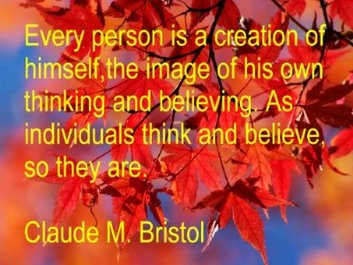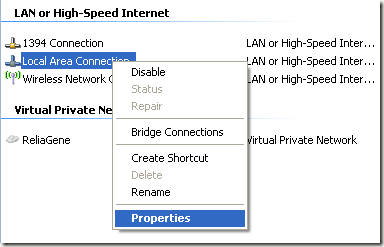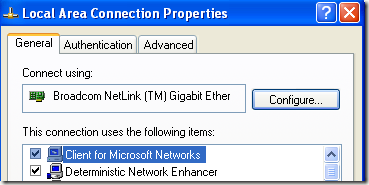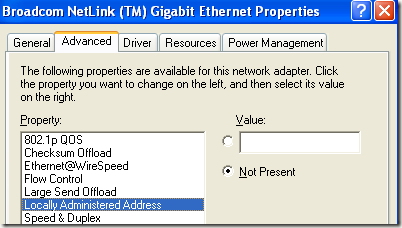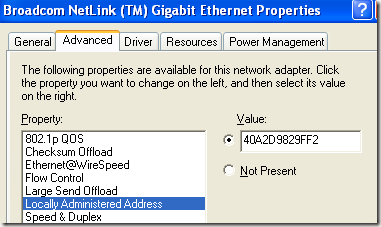I have downloaded this new beta version of google chrome here and tried it my self for 2 days. Amazing browser design and very fast compared with firefox 3. I love the history tabs unlike in firefox wherein it was a dropdown history style. One feature i admired most is the incognito function because it you use this you don`t have to worry of your browsing history. No need to use history eraser or history cleaning after using your browser. Simply because pages you view in this window will not reflect to your browser history and search history. Goodbyes to cookies when you close incognito window except it retain your bookmarks. The bottom status bar and it`s loading pages fading effect amaze me. Don`t know there is something missing in this chrome. Seem s for me i will return and stick to my mozilla firefox 3. Also there is no option for add ons, weird but understandable because "nasa" beta vesion pa to. Kaya Dont expect it to be flawless. I expect bugs and hanging but it works well for me. What i hate most its uses half of my phusical memory. But overall rating for this one for range of 1 to 10.. 6..its worth trying for. i`l just wait for the stable version. 

For you to have an idea for those who haven`t try this one. See information below i have taken from wikepedia.com
Source: Wikepedia
Google Chrome is a free and open-source web browser developed by Google. The name is derived from the graphical user interface frame, or "chrome", of web browsers. Chromium is the name of the open source project behind Google Chrome, released under the BSD license.
A beta version for Microsoft Windows was released on 2 September 2008 in 43 languages. Mac OS X and Linux versions are under development.[3][4][5]
History
Announcement
The release announcement was originally scheduled for 3 September 2008, and a comic by Scott McCloud was to be sent to journalists and bloggers explaining the features of and motivations for the new browser. Copies intended for Europe were shipped early and German blogger Philipp Lenssen of Google Blogoscoped made a scanned copy of the 38-page comic available on his website after receiving it on 1 September 2008. Google subsequently made the comic available on Google Books and their site and mentioned it on its official blog along with an explanation for the early release.
First release
A beta version for Microsoft Windows was released on 2 September 2008 in 43 languages. Google said more would be coming soon.
On 3 September, a Slashdot news item drew attention to a passage in the terms of service for the initial beta release, which seemed to grant to Google a license to all content transferred via the Chrome browser. The passage in question was inherited from the general Google terms of service. The Register summarized the passage as "Your copyright goes up in smoke." On the same day, Google responded to this criticism by stating that the language used was borrowed from other products, and removed the passage in question from the Terms of Service. Google noted that this change would "apply retroactively to all users who have downloaded Google Chrome."
The first release of Google Chrome passed the Acid1 and Acid2 tests, but does not pass the Acid3 test; however, it scores 78/100, which is higher than both Internet Explorer 7 and Firefox 3.
Design
Primary design goals were improvements in security, speed and stability compared to existing browsers. There were also extensive changes in the user interface. Chrome was assembled from 26 different code libraries from Google and others from third parties such as Netscape
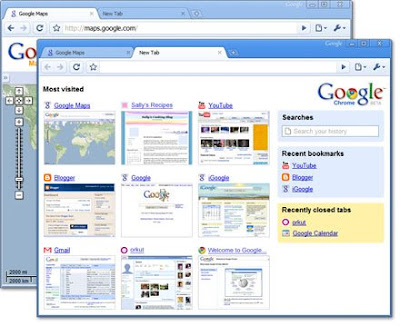
Security
- Blacklists
Chrome periodically downloads updates of two blacklists (one for phishing and one for malware) and warns users when they attempt to visit a harmful site. This service is also made available for use by others via a free public API called "Google Safe Browsing API". In the process of maintaining these blacklists, Google also notifies the owners of listed sites who may not be aware of the presence of the harmful software.
- Sandboxes
Each tab in Chrome is sandboxed into its own process to "prevent malware from installing itself" or "using what happens in one tab to affect what happens in another". Following the principle of least privilege, each process is stripped of its rights and can compute but can not write files or read from sensitive areas (e.g. documents, desktop)—this is similar to "Protected Mode" that is used by Internet Explorer 7 on Windows Vista. The Sandbox Team is said to have "taken this existing process boundary and made it into a jail"; for example malicious software running in one tab is unable to sniff credit card numbers, interact with the mouse or tell "Windows to run an executable on start-up" and will be terminated when the tab is closed. This enforces a simple computer security model whereby there are two levels of multilevel security (user and sandbox) and the sandbox can only respond to communication requests initiated by the user.
- Plugins
Plugins such as Adobe Flash Player are typically not standardized and as such cannot be sandboxed like tabs. These often need to run at or above the security level of the browser itself. To reduce exposure to attack, plugins are run in separate processes that communicate with the renderer, itself operating at "very low privileges" in dedicated per-tab processes. Plugins will need to be modified to operate within this software architecture while following the principle of least privilege.
Chrome supports the Netscape Plugin Application Programming Interface (NPAPI), but does not support the embedding of ActiveX controls. Also, Chrome does not have an extension system such as Mozilla-compatible *.xpi cross-platform extension architecture and thus XPI-based extensions such as AdBlock and GreaseMonkey can not be adapted to Chrome.
Chrome does not support the Java Applets at this time.
- Privacy
A private browsing feature called Incognito mode is provided as well. It prevents the browser from storing any history information or cookies from the websites visited. This is similar to the private browsing feature available in the latest beta version of Internet Explorer 8.
Speed
- JavaScript
The JavaScript virtual machine was considered a sufficiently important project to be split off (like Adobe/Mozilla's Tamarin) and handled by a separate team in Denmark. Existing implementations were designed "for small programs, where the performance and interactivity of the system weren't that important" but web applications like Gmail "are using the web browser to the fullest when it comes to DOM manipulations and Javascript". The resulting V8 JavaScript engine has features such as hidden class transitions, dynamic code generation, and precise garbage collection.Tests by Google show that V8 is about twice as fast as Firefox 3 and the Safari 4 beta.
Several websites have performed benchmark tests using the Sunspider JavaScript Benchmark tool as well as Google's own set of computationally intense benchmarks, which includes ray tracing and constraint solving.[26] They unanimously report that it performs much faster than all competitors, including Safari, Firefox 3, Internet Explorer 7 and Internet Explorer 8.While Opera has not been compared to Chrome yet, in previous tests, it has been shown to perform a bit slower than Firefox 3, which in turn is slower than Chrome.Another blog post by a Mozilla developer comparing the Javascript engines in Firefox 3.1 & Chrome using the Sunspider test results states that some tests are faster in one engine and some are faster in the other.
Stability
- Multiprocessing
The Gears team were considering a multithreaded browser (noting that a problem with existing web browser implementations was that they are inherently single-threaded) and Chrome implemented this concept with a multiprocessing architecture similar to the one developed by Opera in 1994[citation needed], or that was recently implemented by Internet Explorer 8. A separate process is allocated to each tab or plugin. This prevents tasks from interfering with each other, which is good for both security and stability; an attacker successfully gaining access to one application does not gain access to all, and failure in one application results in a Sad Tab screen of death, similar to the well-known Sad Mac. This strategy exacts a fixed per-process cost up front but results in less memory bloat overall as fragmentation is confined to each process and no longer results in further memory allocations.
- Task Management
Chrome features a process management utility called the Task Manager which allows the user to "see what sites are using the most memory, downloading the most bytes and abusing [their] CPU" (as well as the plugins which run in separate processes) and terminate them.
Application support
A feature of the Google browser (in fact one of the main reasons it was created) is the Application Mode. This is a lot more than just hiding the omnibox (navigation bar). This allows web pages to break free of the restrictions of the current browser paradigm. The browser paradigm freely allows the user to reload a page, navigate away or close the window, which would is disastrous for an application that is editing sensitive content. Although this appears to be a minor change, the lack of this feature means that there is no mechanism to prevent the sudden loss of unsaved data (without a major investment in an far more complex AJAX architecture). Other features are still required such as desktop interaction, filetype support and database access. This limits the browser chrome so as not to "interrupt anything the user is trying to do", allowing web applications to run alongside local software (similar to Mozilla Prism and Fluid).
User interface
When Chrome is maximized, the title bar becomes hidden and instead, the tab bar is displayed at the top. Also, when the mouse is moved over a link, the
URI of the link is displayed in a status bar at the bottom left. The status bar is otherwise invisible.
When Chrome is not maximized, the title bar is shown on top of the tab bar.
The main user interface includes back, forward, refresh, bookmark, go and cancel options. The options are similar to Safari, while the settings location is similar to Internet Explorer 7/8. The minimize, maximize and close window buttons are based on Windows Vista.
When the window is not maximized, the tab bar appears directly under the standard Windows title bar. When maximized, the title bar disappears and instead the tab bar is shown at the very top of the screen. Unlike other browsers such as Internet Explorer or Firefox which also have a full-screen mode that hides the operating system's interface completely, Chrome can only be maximized like a standard Windows applications. Therefore, the Windows task bar, system tray and start menu link still take space at all times unless they have been configured to always hide.
As opposed to the latest versions of Firefox and Internet Explorer which allow the user to adjust the display dimensions of a web page completely, Chrome allows the resizing of the text only. Therefore, a web page 800 pixels wide, for example, will still be 800 pixel wide even if the user resizes it. Only the text will be affected by the resizing.
- Gears support
Chrome includes Gears which adds developer features that may or may not become web standards, typically relating to the building of web applications (including offline support).
- New Tab Page
Chrome replaces the browser home page which is displayed when a new tab is created with a New Tab Page. This shows thumbnails of the nine most visited web sites along with the sites most often searched, recent bookmarks and recently closed tabs. This concept appeared first with Opera's Speed Dial.
- Omnibox
The Omnibox is the URL box at the top of each tab, based on the one in Opera. It includes autocomplete functionality but will only autocomplete URLs that were manually entered (rather than all links), search suggestions, top pages (previously visited), popular pages (unvisited) and text search over history. Search engines can also be captured by the browser when used via the native user interface by pressing Tab.
- Popups
Popup windows "are scoped to the tab they came from" and will not appear outside the tab unless the user explicitly drags them out. Popup windows do not run in their own process.
- WebKit rendering engine
Chrome uses the WebKit rendering engine on advice from the Android team. Like most browsers, Chrome was extensively tested internally before release with unit testing, "automated user interface testing of scripted user actions" and fuzz testing, as well as WebKit's layout tests (99% of which Chrome is claimed to pass). New browser builds are automatically tested against tens of thousands of commonly accessed sites inside of the Google index within 20-30 minutes.
- Tabs
Tabs are the primary component of Chrome's user interface and as such have been moved to the top of the window rather than below the controls (similar to Opera). This subtle change is in contrast to many existing tabbed browsers which are based on windows containing tabs. Tabs (including their state) can be seamlessly transferred between window containers by dragging. Each tab has its own set of controls, including the Omnibox URL box.
- Status bar
By default, there is no status bar displayed unlike other browsers which display one at the bottom of the screen. However, when the mouse cursor is moved over a link, the address of the link is displayed at the bottom left of the screen.
 Topping the list of highest paid CEOs is 43-year-old Nabeel Gareeb of Pakistani origin, CEO of chipmaker MEMC Electronic Materials since April 2002 with a total compensation package of $79.6 million. Gareeb joined MEMC as CEO in April 2002. Gareeb's appointment came after Texas Pacific Group purchased the company from its German owners in 2001 and recapitalised the business. Prior to joining MEMC, Gareeb was the Chief Operating Officer of International Rectifier Corporation, a leading supplier of power semiconductors, where he was responsible for worldwide operations, research and development and marketing. He joined International Rectifier in 1992 as Vice President of Manufacturing and subsequently held other senior management positions. Gareeb immigrated to US from Pakistan more than 25 years ago. He holds an MSc in engineering management, and a Bachelors in electrical and electronic engineering.
Topping the list of highest paid CEOs is 43-year-old Nabeel Gareeb of Pakistani origin, CEO of chipmaker MEMC Electronic Materials since April 2002 with a total compensation package of $79.6 million. Gareeb joined MEMC as CEO in April 2002. Gareeb's appointment came after Texas Pacific Group purchased the company from its German owners in 2001 and recapitalised the business. Prior to joining MEMC, Gareeb was the Chief Operating Officer of International Rectifier Corporation, a leading supplier of power semiconductors, where he was responsible for worldwide operations, research and development and marketing. He joined International Rectifier in 1992 as Vice President of Manufacturing and subsequently held other senior management positions. Gareeb immigrated to US from Pakistan more than 25 years ago. He holds an MSc in engineering management, and a Bachelors in electrical and electronic engineering. Second on the list is Nvidia Corporation co founder Jen-Hsun Huang. Huang founded graphic chip maker in April 1993 today commands a pay packet of $45.9 million. He has being President, Chief Executive Officer, and a member on Nvidia's Board since its inception.
Second on the list is Nvidia Corporation co founder Jen-Hsun Huang. Huang founded graphic chip maker in April 1993 today commands a pay packet of $45.9 million. He has being President, Chief Executive Officer, and a member on Nvidia's Board since its inception. Jonathan Schwartz, chief executive officer and president of Sun Microsystems is the third highest-paid young tech CEO with an annual package of $13.5 million. A member of Sun's board of directors, Schwartz became company's CEO in 2006, succeeding the Sun's co-founder and current chairman of the board, Scott McNealy.
Jonathan Schwartz, chief executive officer and president of Sun Microsystems is the third highest-paid young tech CEO with an annual package of $13.5 million. A member of Sun's board of directors, Schwartz became company's CEO in 2006, succeeding the Sun's co-founder and current chairman of the board, Scott McNealy. Forty-four-year old electronics engineer from Hyderabad, Shantanu Narayen, became Adobe's CEO last year. His annual compensation is at $12 million.
Forty-four-year old electronics engineer from Hyderabad, Shantanu Narayen, became Adobe's CEO last year. His annual compensation is at $12 million. At no. five is CEO of Expedia Dara Khosrowshahi with a total compensation package of is $4.9 million.
At no. five is CEO of Expedia Dara Khosrowshahi with a total compensation package of is $4.9 million. 














